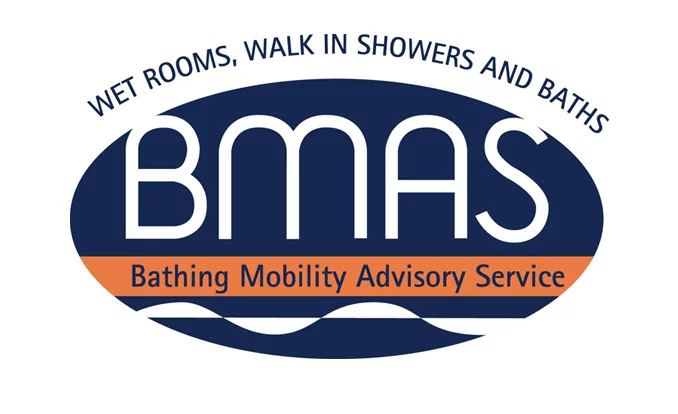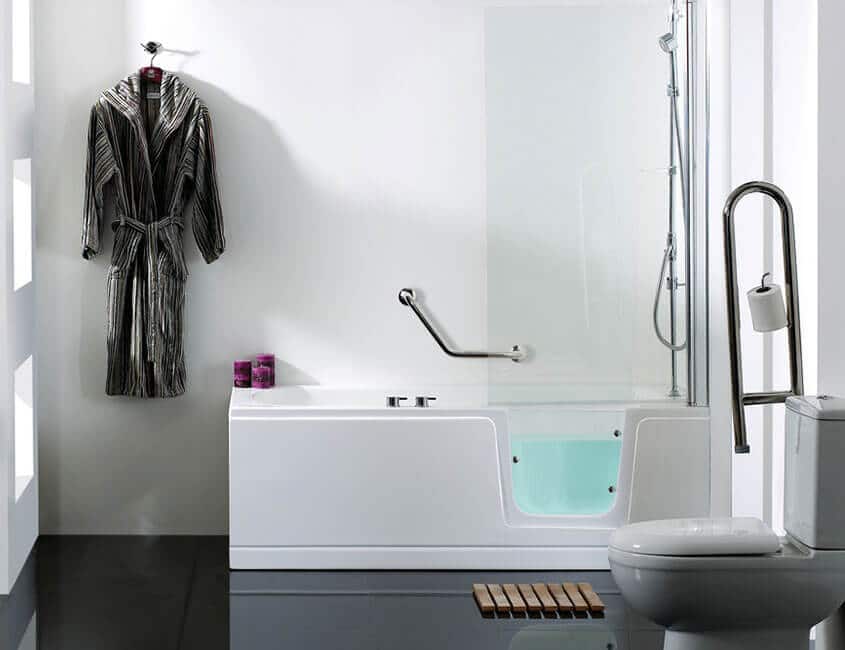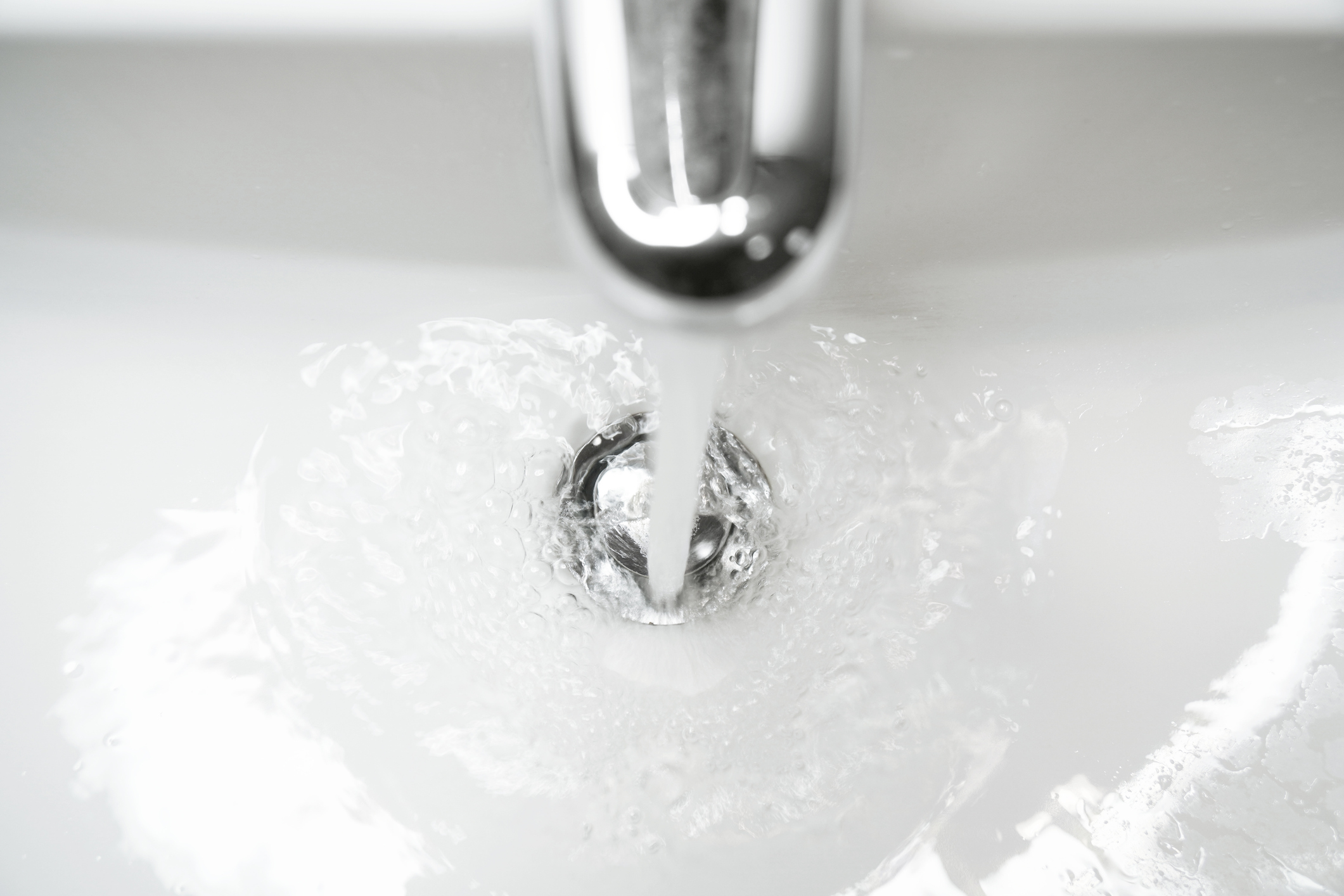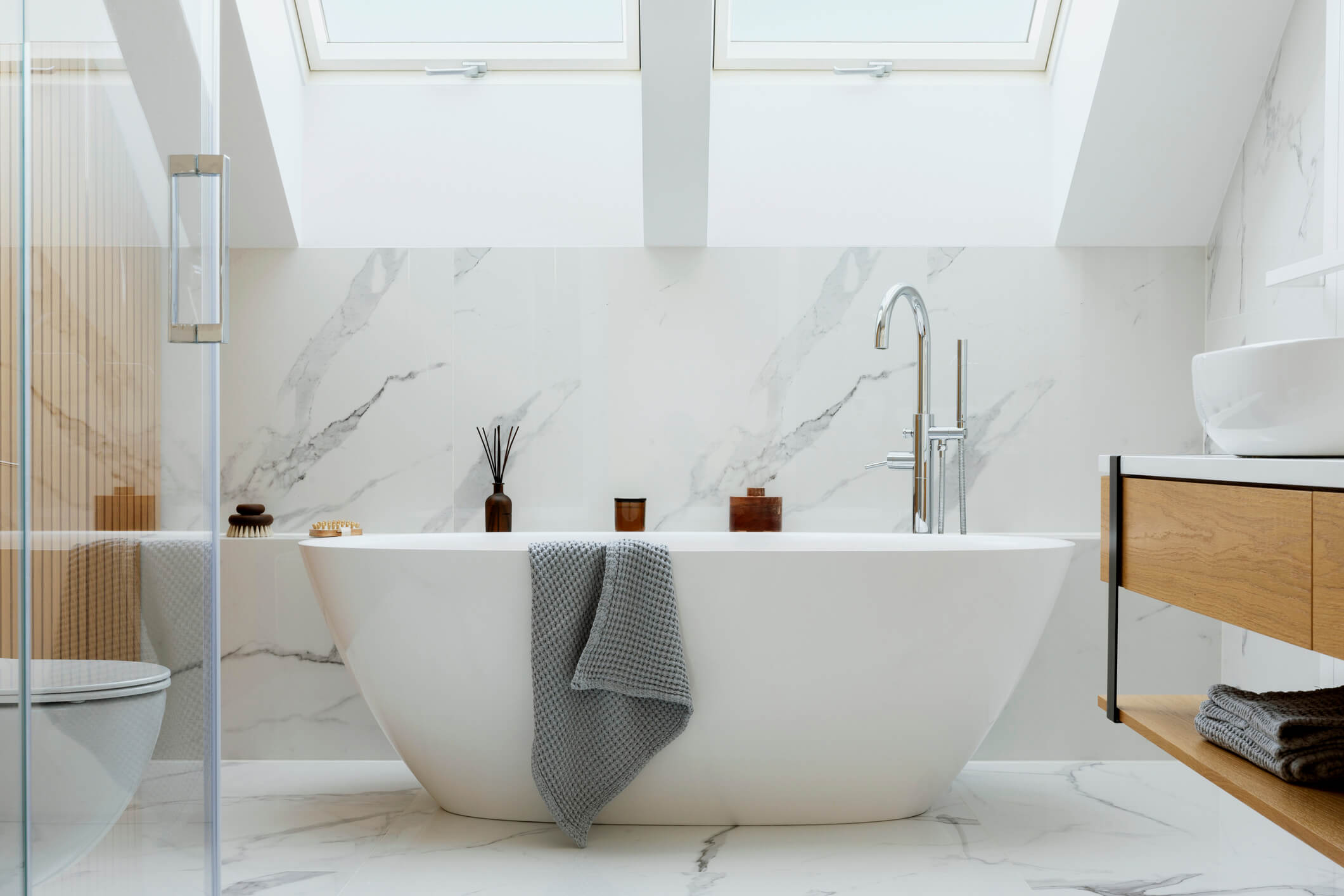One of the biggest decisions you’ll need to make when planning your bathroom renovation is whether to choose a walk-in shower or a bath. There’s even a third choice you might not have heard of; a walk-in shower-bath!
Choosing the best option is such a personal decision and depends on many things, including the size of the room, your current and future lifestyle needs, and any mobility issues you may have right now or want to plan for in the future.
While there’s no single ‘right’ answer, this guide will help you make a decision that’s right for you.
Let’s look at each option in more detail:
Walk-In Shower
Pros
- Easier access – with no need to step over a high bath rim, it’s ideal for those with limited mobility.
- Quick and convenient – perfect for those who prefer to spend less time in the bathroom.
- Stylish and modern – a compact and elegant addition to any bathroom, with options to suit both small and large spaces.
- Future-proofed – walk-in showers can be easily updated with grab rails, a seat, and slip-resistant flooring.
Cons
Not as relaxing as a bath – you miss out on the therapeutic soak that baths offer.
For more guidance, read our article What is the Best Walk-in Shower for Mobility?
Walk-In Bath
Pros
- Therapeutic benefits – soaking in a bath can soothe aches and pains and help you relax and unwind from the stresses of life.
- Comfort – baths are not just for getting clean! Lots of people enjoy the ritual of bathing for relaxation.
- Specialist features – you can choose options like hydrotherapy jets for both extra luxury and wellness.
Cons
- Longer to fill and empty – you’ll need to wait inside the bath until it’s full and again until it fully empties.
- Takes up space – A walk-in bath can seem visually bulky in smaller bathrooms and leaves you with less usable floor area.
- Mobility – it’s a personal decision, but you may find lowering yourself into a seat more difficult than walking straight into an open shower cubicle.
Read our Complete Guide to Walk-in Baths for more details. We offer a wide range of both walk-in showers and walk-in baths. Check out our range here.
Walk-In Shower-Bath: The Best of Both!
A walk-in shower-bath gives you the convenience and lower running costs of a shower and the comfort of a bath in a single unit. It’s a great choice if you would rather not have to choose between a shower and a bath; you’ll enjoy the convenience of a shower and the luxury of a relaxing bath.
Pros
- Space – takes up less space than a separate shower and bath.
- Flexibility – for different household needs and preferences.
- Safety features – are built-in; side-entry door and comfortable seating for peace of mind.
Cons
- Space – takes up more floor space than a standalone shower unit.
- Water usage – filling a bath uses more water, which could mean higher bills if you’re on a meter.
- Installation – can be more complicated and costly than a single shower or bath unit.
Water Usage, Running Costs & Environmental Considerations
- Walk-In Showers – these use roughly 30-60 litres per use, so they’re cheaper to run if you’re on a water meter.
- Walk-In Baths – use approx.150-200 litres. Expect a higher bill if you have a meter. We can help you choose a compact model to help keep water usage down.
Showers are often considered a more eco-friendly choice.
Which Is Best for Age-Related Conditions?
- Reduced Mobility – a walk-in shower with level, or low-level floor access can be a safer and more practical option.
- Circulatory Conditions – soaking in warm water in a walk-in bath may improve circulation and help ease those aches and pains.
- Inflammatory Issues – soaking in warm water may help soothe stiff joints, so you might prefer a walk-in bath.
Which Works Best for Different Bathroom Sizes?
- Small Spaces – walk-in showers are the clear winner here. They take up less space than a bath, and corner designs can make the most of even the most limited floor space.
- Larger Rooms – if space isn’t an issue, you may not need to choose between a walk-in shower for everyday use or a walk-in bath for relaxation. You’ll still want to think about personal preferences, budget, daily running costs and lifestyle needs when choosing between the options available.
Which Is The Bigger Investment: Installation Time, Cost to Run and Water Usage?
- Walk-In Showers – are the most affordable option to install. See our breakdown here: How much is a walk-in shower? They are also the cheapest to run for energy consumption and water usage (if you’re on a meter).
- Walk-In Baths – more costly for installation, running costs, and water usage. It’s up to you whether the health and comfort benefits are worth the extra money.
- Walk-in Shower-Baths – the most costly to install as they’re a combination of both a shower and a bath. Daily running costs and water usage will depend on whether you shower or bathe.
If you’re thinking about a wet room, read our article explaining all about costs
How Do They Differ from Standard Baths and Showers?
- Walk-In Showers – these are designed with safety and accessibility in mind. They offer level or low-level entry, slip-resistant flooring, and optional seating. Explore our walk-in shower range.
- Walk-In Baths/ Shower-Baths – these have a watertight door on the side panel so there’s no need to step over a high bath rim. Some models have built-in seats and therapeutic extras like massage jets. View our walk-in bath collection. Here at BMAS, we’ve got a range of walk-in baths to choose from, take a look at our range here.
Standard bathrooms often aren’t designed for mobility needs. Specialist products from BMAS can make all the difference. You could also consider a wet room for maximum accessibility. Read our article on wet rooms.
Making Your Decision
Here’s a quick summary to help you choose:
- Access – floor or low-level access (shower), therapeutic relaxation (bath), or a combination of both (shower-bath)
- Room Size & Layout – a walk-in shower works best in small spaces, while a walk-in shower-bath and walk-in bath will take up more floor space.
- Budget – showers are usually quicker and cheaper to install. Baths and shower-baths are typically a bigger investment.
- Water Usage – showers are the most water-efficient and are often better for the environment as they use less water and energy.
- Lifestyle – think about whether you prefer the convenience and speed of a shower, the indulgence of a long soak, or the flexibility of both.
- Future-Proofing – will your choice still work for you in five or ten years? A shower-bath can offer the most flexibility if you’re finding it hard to choose.
For more advice, check out our guide on how to adapt a bathroom for the elderly.
Final Thoughts
Choosing between a walk-in bath, walk-in shower, or a combination of both depends on your personal preferences, lifestyle needs and budget requirements.
At BMAS, we specialise in helping customers create bathrooms that are safe, stylish, and perfectly suited to their needs. Whichever option feels right for you, our experts can guide you through the choices and help you make the best decision. Having a look through our walk-in showers and walk-in baths might help you to make an informed decision.
Ready to take the next step? Get in touch with BMAS today to discover how we can help you design a bathroom that combines safety, comfort, and style.



